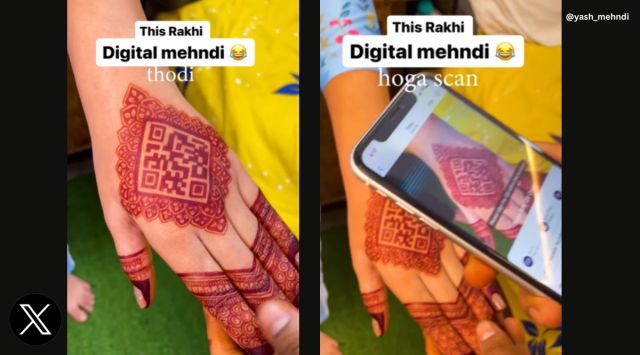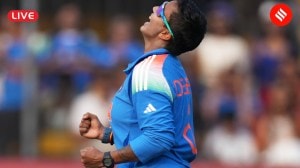A mehendi with QR code to ease rakhi ‘gift-giving’ process. Watch video
The video of the QR code rakhi was posted on Instagram by a freelance mehendi artist who goes by the username @yash_mehndi.

Today, Raksha Bandhan or rakhi that celebrates brother-sister bond is being observed in many parts of India. On the auspicious occasion, girls and women apply mehendi on their hands before they tie the sacred thread of rakhi around their brother’s wrist. The ritual of tying rakhi is often followed by brothers giving their sisters a gift or money.
Now an amusing QR code rakhi that has made this ‘gift-giving’ process easier is going viral.
On Sunday, popular mehendi artist who goes by the Instagram username @yash_mehndi shared a video in which he had created a QR code design on a woman’s hand. This scannable QR would then direct a person to an online payment service like Paytm. The idea behind this QR code mehendi was to make it easier for brothers to directly transfer money to their sister’s accounts without the hassle of dealing with cash.
However, while scanable QR code mehendi and even tattoos are gaining popularity, it is important to note that in this particular video, the QR code was unfunctional. As a clarification, the mehendi artist wrote, “It’s just a content i edit this payment transaction screen recording with my mehndi video to make it real but may be mehndi QR code can not be use for payments It’s just for fun”.
This “mind-blowing” video has gathered over seven lakh likes so far. Commenting on it, an Instagram user wrote, “For a second I felt kya artist hai mehendi wala then I realised it’s a video.” Another person wrote, “Haha…mind blowing😂”.
In India, the use of QR codes for payments is widespread. In February last year, Raju Patel, a beggar from Bihar, made news after he shed the traditional method of asking for alms and started using PhonePe, a digital wallet and an online payment app to take charity. Amused by Patel’s innovation, some people labelled him as “India’s first digital beggar”. Meanwhile, a few people pointed out how technology and digital literacy have done little to eliminate poverty.



- 01
- 02
- 03
- 04
- 05




























